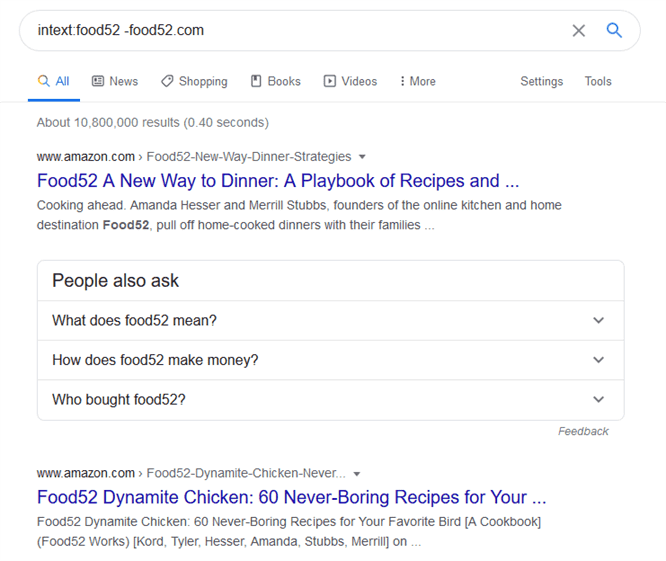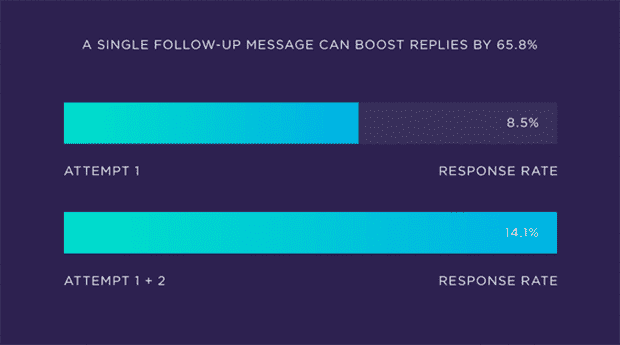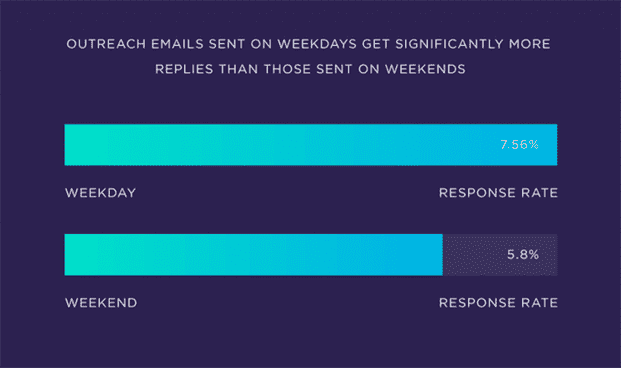Let’s say you’re attending an industry conference, and your goal is to build more professional connections. Do you ignore everybody, throw a business card in the face of everyone who walks by (please don’t!), or strike up friendly conversations before handing over your card?
While the last option is sensible, the first two wouldn’t accomplish much at all. The same principle applies to online outreach. Instead of simply going unnoticed or bombarding users with link spam, you can use an effective outreach strategy to nurture genuine relationships, build valuable backlinks and send your rankings skyward.
Why Is Outreach Important for Link Building?
Any effort to actively increase the number of backlinks to a site is referred to as link building. These links can come from anywhere on the web, whether someone links to a site on a discussion forum, in a comments section or in website copy.
Backlinks don’t just boost site performance by encouraging more individual users to visit a site—when they’re coming from trustworthy sources, search engines like Google also view them as stamps of approval. As a result, high-quality backlinks can improve search engine rankings, too.
For link building purposes, though, it can be tough to generate a meaningful number of backlinks through organic channels alone—most people need to feel pretty strongly about a product, service or piece of content to go through the effort of linking to it. Plus, any backlinks that do occur organically may not necessarily come from an authoritative or reliable source, and so may not significantly contribute to search engine rankings.
So, what can you do to efficiently build high-quality backlinks from authoritative sources? Improve your outreach strategy by learning how to reach out to the people who can give you those links.
It’s refreshingly low-tech, but effective link building outreach isn’t always easy. It requires trial and error, constant improvement and genuine human connections to yield results. Like any other skill, though, it can be honed, delivering better results, increased traffic and higher rankings. All you need to get started is a simple “hello.”
Types of Link Building Outreach
You know you’ll be contacting people in the hope of securing high-quality backlinks. But what exactly will you be doing? The answer depends on your goals and the outreach methods you choose.
Using several types of link building outreach strategies, you can secure quality backlinks and more visitors while providing value for your contacts, too.
Fix Unlinked Mentions
Every time a site mentions a product, brand or site without linking to it, an unlinked mention is born. To gain a backlink without asking site administrators to alter their content in any way, simply request they add a link to any pre-existing unlinked mentions.
Wondering how to find unlinked mentions in the first place? A clever Google Search tip can help—just search for “intext:example -example.com” in Google:
Offer a Preview
Sometimes it’s better to offer than request. Reach out to influential bloggers, journalists and social media figures in your vertical and ask if they’d like to be contacted when a piece of your upcoming content is released.
You can even explicitly state you’re not asking for a backlink, but instead notifying them of content that might interest them.
Keep your previews brief. Describe the topic you’re addressing, and quickly highlight any noteworthy features such as original research, breaking news or particularly unique insights.
Offer Guest Posts
If a site publishes articles or blog posts about a topic relevant to the vertical you’re working in, it’s prime real estate for a guest post. You get to contribute to an authoritative site, and the site gets fresh and engaging content.
As always, prioritize quality and authenticity above all else. If all your guests posts are hastily written, fail to provide valuable information or are too promotional, they likely won’t deliver the results you want.
Your goal isn’t just to get a backlink: It’s also to convince readers the linked website is worth their click.
Tap Into Influencer Marketing
If you have the financial resources to contract influencers and respected bloggers in your industry, you also have the opportunity to put high-quality backlinks in front of a whole new audience.
A recommendation from the right influencer can generate substantial results. A hefty 63 percent of 18- to 34-year-olds trust influencers more than brands, and 58 percent purchased a product because of an influencer within the last six months.
To find influencers whose audience might click your backlinks, use social media to find bloggers and content creators involved in your niche. For instance, if you’re trying to get backlinks for a culinary website then you might try perusing the #foodblogger hashtag on Twitter.
Master the Art of Outreach Emails
They may be the granddaddy of digital outreach, but cold emails still have strong link building potential. With nearly every industry saturated with content, though, your emails need something special to avoid vanishing in a sea of lookalikes.
With a little extra thought and effort, you can take your outreach emails from predictably generic to genuinely eye-catching.
You don’t have to take our word for it. Backlinko’s analysis of 12 million outreach emails uncovered straightforward and effective tactics:
Personalize, Personalize, Personalize
You’ve likely heard it before, but it’s worth saying again: Personalization is critical, whether you’re writing a newsletter or perfecting your outreach strategy.
The benefit of personalization is monumental. Personalized subject lines alone have a ⅓ higher response rate than their cookie-cutter counterparts:
Emails with a personalized body generate even better results, garnering 32.7 percent more replies than those with a generic body.
Take an additional couple of minutes to address your recipients by name, reference their works or pay a specific compliment, and your outreach emails are much less likely to go ignored.
Regularly switch out your go-to email elements, from opening lines to jokes. No one likes receiving stale, recycled emails. Making an effort to stay fresh will help jumpstart your creativity, too.
Write a Detailed Subject Line
Life in the digital age is hectic, and it sometimes seems like attention spans are shorter than ever (they may actually be increasing, by the way). It’d be hard to blame you for thinking ultra-succinct subject lines are the best way to grab and keep readers’ interest.
The data says otherwise. Subject lines with 36–50 characters perform best, and the shortest subject lines (1–15 characters) actually performed worse than those with 70 characters or more.
When composing your subject lines, shoot for the 36- to 50-character sweet spot and be as specific as possible.
Don’t Forget to Follow Up
Sending a second email after your first one gets overlooked can be intimidating. No one wants to appear overeager, right?
The reality, though, is your recipients may have simply been too busy or distracted to respond to your first attempt. Consider the remarkable efficacy of sending a couple follow-up emails—just a single one can boost response rates by 65.8 percent:
Create a reminder (or set your email management platform) to send a second, third or even fourth message. Don’t forget to personalize your follow-up messages, too!
Stick to Weekdays
How much do you love being reminded of work on a weekend? Our guess is not very much, and your recipients probably feel the same way.
Perhaps that’s why people are so much more responsive to outreach emails on weekdays. Or maybe they’re just checking their inboxes more frequently, so your message is less likely to get lost in the shuffle.
Whatever the reason, outreach messages sent Monday through Friday drive about 23 percent more conversions than those sent on Saturday or Sunday:
Of all possible weekdays, emails sent on Wednesday generated the highest response rate— 7.64 percent, to be precise. But since every weekday drove a response rate of 7.5 percent or higher, chances are small- and medium-sized businesses won’t need to prioritize any weekday in particular to see results.
Reach Out to the Right People
The practice of searching for potential link opportunities is known as link prospecting. It traditionally calls for techniques like search engine results page (SERP) scraping and competitor backlink analysis to uncover the gold in them-thar hills … er, online content.
Such strategies can generate measurable results, especially with the help of time-saving tools. Some of the most widely-used options include:
- Ahrefs‘ Site Explorer to check backlinks, Content Explorer to identify relevant content and Alerts to get notified of new mentions, backlinks and more;
- SEMrush to manage backlinks and discover new linking opportunities;
- BuzzSumo to find authoritative influencers in your niche and analyze top-performing content on any topic;
- Hunter to quickly find verified email addresses associated with domains and companies; and
- Google Alerts to be notified of fresh mentions of a specified topic, brand, product, name or phrase.
No matter which tools you choose, exposure alone won’t give you the links you want. Many people simply don’t take the time to link to the content they read or the products they use, no matter how much they love it. Plus, exposure to a small group of the right people is more effective than exposure to a wide audience with minimal interest.
So, always consider who is most likely to post links on a regular basis. The answer is the Linkerati, a term originally coined by former Moz CEO Rand Fishkin in 2006. The word is as relevant now as it was then, and refers to link-happy netizens such as:
- bloggers;
- influencers;
- digital journalists;
- independent content creators; and
- active forum users.
While tools like BuzzSumo can help you find relevant influencers who may be able to offer valuable backlinks, keep an eye out for chances to connect with the Linkerati yourself.
For instance, you could check to see if an active subreddit exists for your niche. If one does, try creating original, Reddit-friendly content to post there. If it’s well-received, you’ll gain more visitors and expose the site you’re optimizing to frequent Reddit users who may link to it in the future.
Similarly, you might try participating in your vertical’s Twitter community and identifying people—whether they’re journalists or active users—who make a habit of linking to interesting content. The next time you’re about to publish a new blog post, why not shoot them a DM to see if they’d like to read it?
In both scenarios, you’ll uncover high-quality backlinking opportunities you might’ve missed using more traditional outreach tools.
Optimize Outreach, Optimize Everything
Handing out business cards to new professional contacts does more than give people a quick way to reach you—it also opens up doors to meaningful, long-term connections. Done properly, the same holds true for online outreach.
When you learn how to do outreach in a thoughtful and strategic way, you’re not just tossing links into the digital ether and hoping something sticks. You’re opening pathways to new partnerships, more targeted exposure and the high-quality backlinks you need to meet your website goals.
Image credits
Screenshot by author / July 2020
Backlinko / April 2019







